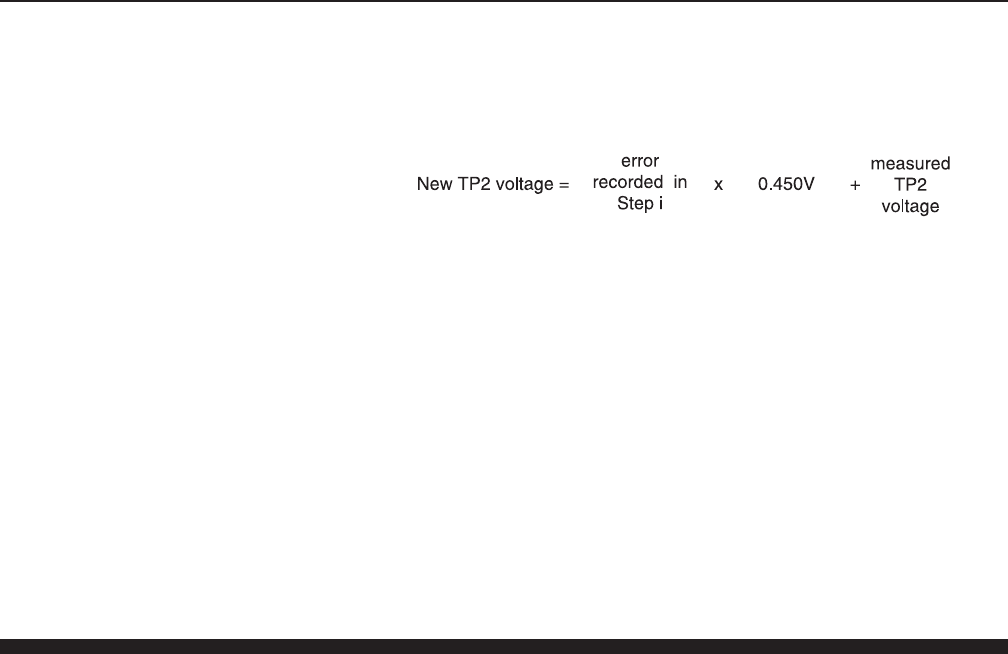User Manual

Brooks
®
Model 5850i
3-8
Section 3 Operation
Installation and Operation Manual
X-TMF-5850i-MFC-eng
Part Number: 541B108AAG
December, 2008
2. If the error is greater than 0.5% set the command potentiometer for
100% (5.000V). Connect the DVM positive lead to TP2 (linearity
voltage) and the negative lead to TP4 (circuit common). Calculate a
new TP2 voltage as follows:
Example:
Controller error = 0.7%
Measured TP2 voltage = -0.567 volts
TP2 correction = 0.7 x 0.450 = 0.315 volts
New TP2 correction = 0.315 + (-0.567) = -0.252 volts
Adjust the linearity potentiometer for an output equal to the new TP2
voltage and then repeat steps f, g and h.
NOTE: The voltage at TP2 can range from -10 to +3 volts, however, it is
recommended that this voltage stays between -2.5 and +2.5 volts for proper
operation. If the recommended voltage range is exceeded, the desired
accuracy and/or signal stability may not be achieved. If one of the limits is
reached, check the restrictor sizing. Refer to Section 4-7.
3-5 Response
Fast Response Adjustment
Two methods of adjusting the step response of the 5850i mass flow
controllers can be used.
Method Number 1 describes a procedure that will get the step response
close to optimum quickly and without any flow measuring equipment.
This method should be used when the response time of the flow
controller is not critical to overall system performance.
Method Number 2 describes a procedure that will allow adjustment of your
5850i mass flow controller to optimum step response performance.
This method is the preferred way to adjust the step response. Adjust-
ment of the fast response circuit will not affect the accuracy of the flow
controller as adjusted in Section 3-4.
1. Fast response adjustment (six seconds response specification not
guaranteed)
NOTE: This procedure requires an oscilloscope, chart recorder or a DVM
with a sample speed of three samples per second or greater to monitor the
rate of change of the output signal.
a. Adjust the setpoint for 100% flow and wait about 45 seconds for the
flow output signal to stabilize.
b. Step the command signal to 0% or activate valve override closed to
stop the flow. Observe the flow signal output as it decays.
c. The behavior of the flow signal during this transition between 100%










